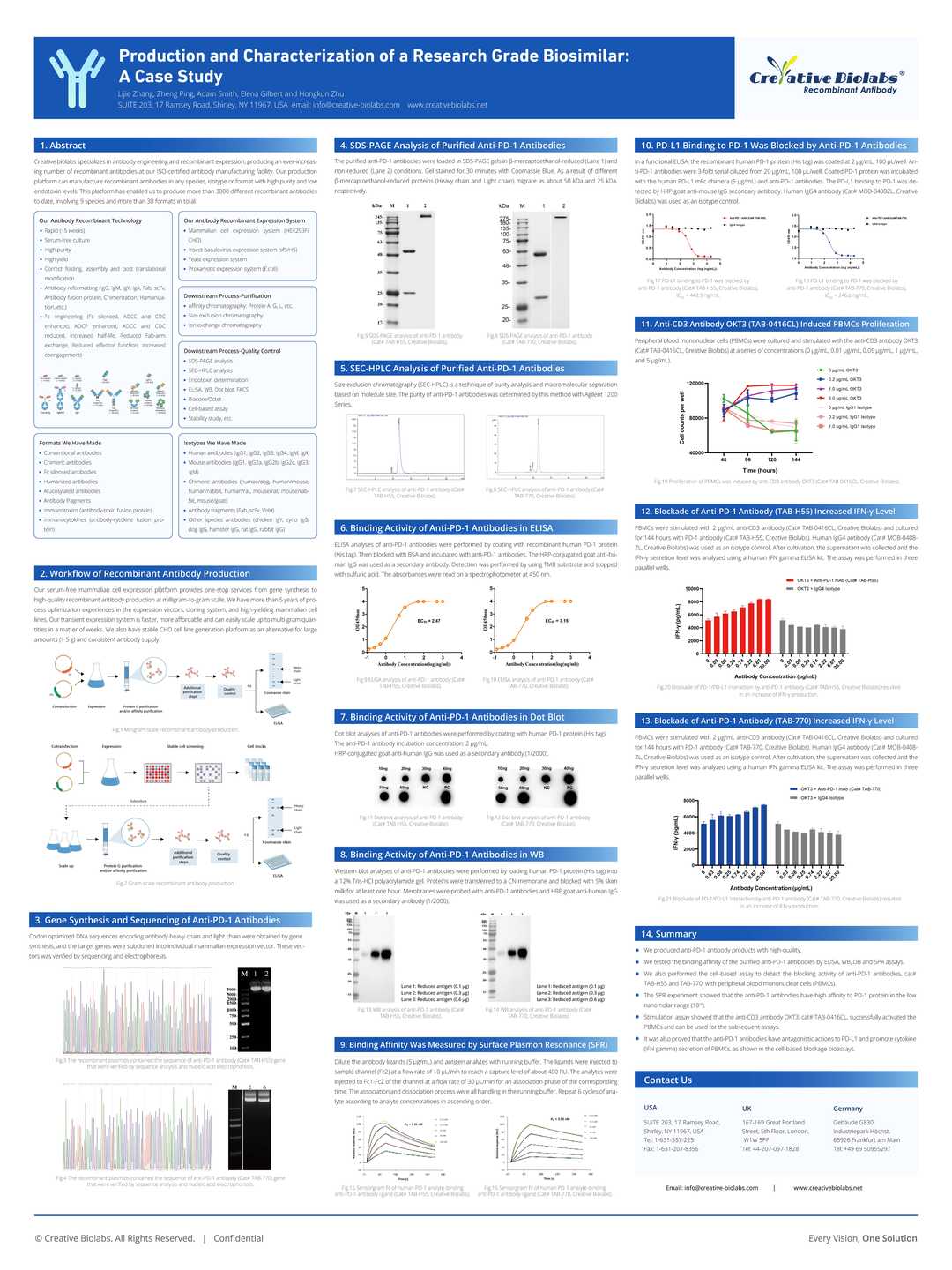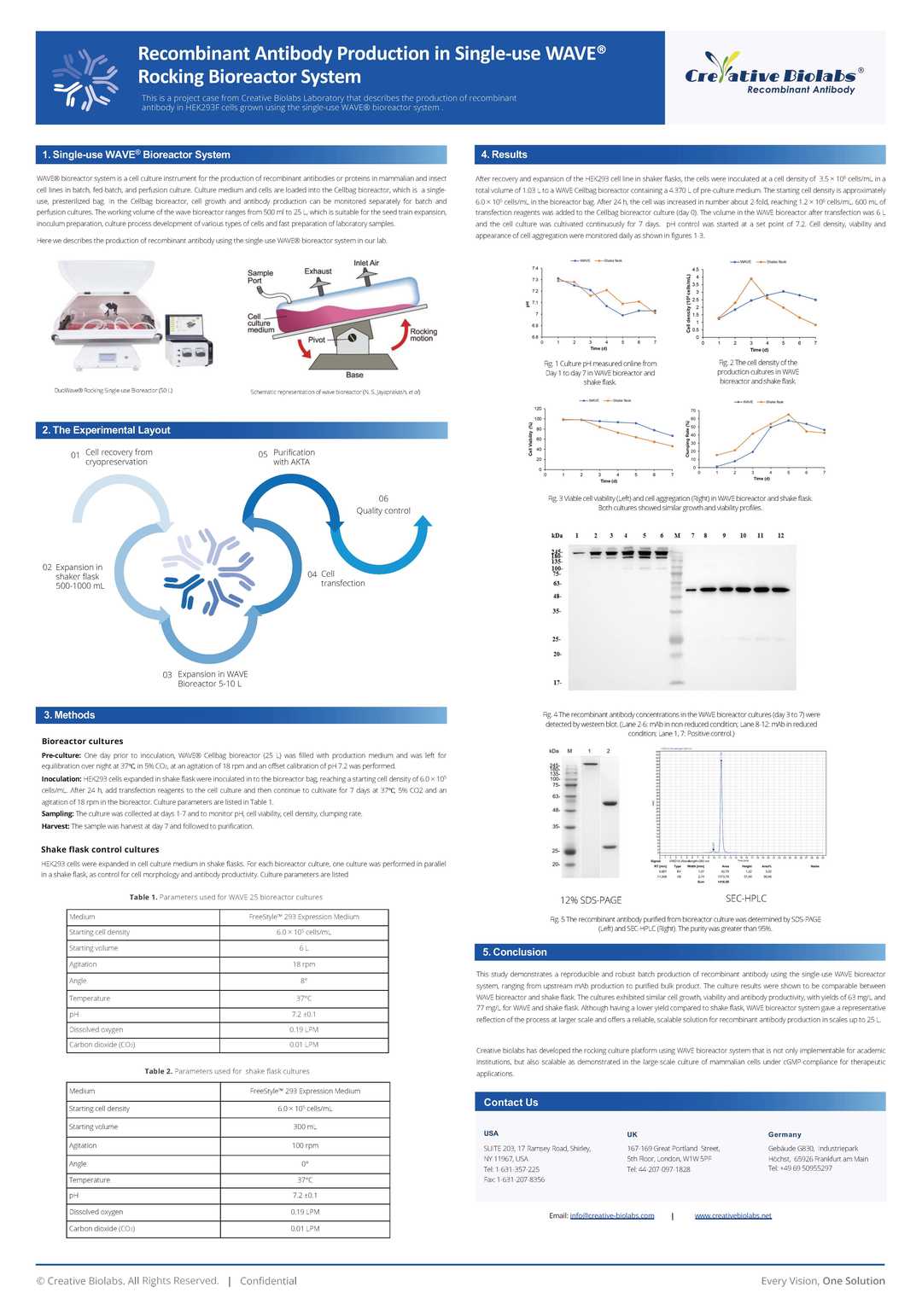Anti-Human CEACAM6 Recombinant Antibody (TAB-444LC)
CAT#: TAB-444LC
Recombinant monoclonal antibody to CEACAM6. It is a humanized antibody that can be potentially used in the treatment of pancreatic cancer.








Specifications
- Host Species
- Human
- Derivation
- Humanized
- Type
- Humanized antibody
- Specificity
- Human
- Applications
- IHC, ELISA, FC, WB, ADCC, FuncS
- Related Disease
- Pancreatic cancer
Product Property
- Preservative
- Human
- Storage
- CEACAM6 (carcinoembryonic antigen-related cell adhesion molecule 6)
Applications
- Application Notes
- Flow Cytometry
Binding of NEO-201 to human carcinoma cell lines was analyzed by flow cytometry. Cells (1.0 × 10⁶) were incubated with 1 µL per test of LIVE/DEAD Fixable Aqua in 1× phosphate buffered saline (PBS) for 30 min at 4°C to accomplish live versus dead cell discrimination. Cells were then centrifuged, washed twice with cold PBS, and then stained with Pacific Blue-conjugated NEO-201 antibody in 1× PBS + 1% BSA for 30 min at 4°C. After staining, cells were washed twice with cold PBS and examined using a FACSVerse flow cytometer. Analysis of cellular fluorescence was performed using BD FACSuite software. Positivity was determined using fluorescence minus one controls. Staining values>10% positive were considered positive for NEO-201 expression. Positive cell lines were ranked according to their quantified expression level (% positive × MFI), and then sorted into groups of low (<200), medium (200–1,000), and high (>1,000) expression.
Immunohistochemistry (IHC)
Tissue microarrays for colon samples (CO808, CO951) were obtained from US Biomax (Rockville, MD, USA), and AccuMax tissue microarrays for colon [A303(I)], pancreas [A207(II), A307], stomach (A209), lung [A206(V), A306], breast [A202(VI), A712], uterus (A212), ovary [A212, A213(II)], prostate [A302(IV)], and various normal [A103(VII)] samples were obtained from Accurate Chemical and Scientific Corporation. NEO-201 was biotinylated using the Biotin Protein Labeling Kit as per manufacturer's instructions. Slides were baked at 60°C for 20 min, deparaffinized with xylene, and rehydrated with a graded ethanol series. Slides were then subjected to peroxide blocking using Peroxidazed I solution for 2 min, avidin blocking using avidin solution for 10 min, biotin blocking using biotin solution for 10 min, and protein blocking using CAS-Block histochemical reagent for 10 min. Slides were then incubated at room temperature with negative control biotinylated human IgG1 kappa or biotinylated NEO-201 at 10 µg/mL diluted in 1× PBS for 2 h. Detection was enabled with Dako streptavidin–HRP conjugate at 1:300 for 30 min, incubation with DAB peroxidase substrate for 1–3 min, and counterstaining with hematoxylin. Each microarray tissue spot was evaluated by light microscopy for cell staining intensity using the following scale: 0 (negative), 1+ (weak), 2+ (moderate), 3+ (strong), 4+ (very strong). A tissue spot was recorded as positive if it contained cells stained with intensity ≥1+.
ADCC Assay
Antibody-dependent cellular cytotoxicity assays were performed. Negative selection of NK cells from human donor PBMCs was performed using the EasySep Human NK Cell Isolation Kit according to the manufacturer's protocol. Purified NK cells were incubated overnight in RPMI-1640 medium supplemented with l-glutamine, 10% FBS, and antibiotics. On the day of the assay, target cells (CFPAC-1, ASPC-1) were labeled with 10 µM calcein AM cell-permeant dye for 30 min and then seeded in triplicate at 3.0 × 10³ cells/well into black-walled flat-bottom 96-well culture plates. Target cells were then treated with 10 µg/mL of human IgG1 isotype control antibody or NEO-201 antibody unless otherwise indicated, and then NK cells were added at effector-to-target (E:T) ratios of 12.5:1 and 25:1. After 4 h incubation at 37°C, 1.67 µg/mL propidium iodide (PI) was added to each well, the plate was imaged using the Celigo Imaging Cytometer (Nexcelom Bioscence LLC, Lawrence, MA, USA), and the numbers of live target cells (calcein AM+/PI−) versus dead cells (calcein AM+/PI+ or calcein AM−/PI+) was analyzed and recorded by the Celigo Imaging Cytometer analysis software. Specific ADCC lysis was calculated as follows: % specific lysis = 100 − [(average live target cell count for antibody treated samples/average live target count for control samples) × 100].
Complement-Dependent Cytotoxicity (CDC) Assay
Complement-dependent cytotoxicity assays were performed. ASPC-1 target cells were labeled with calcein AM and seeded at 5.0 × 103 cells/well into black-walled 96-well plates as described above in the ADCC assay methodology. Cells were then treated with 0.5 or 5.0 µg/mL NEO-201 for 15 min at 37°C to opsonize the target cells, and then purified rabbit complement was added to each well at a final dilution of 1:8. After incubation at 37°C for 30, 60, or 120 min, 1.67 µg/mL propidium iodide was added to each well, plates were imaged and analyzed using the Celigo Imaging Cytometer, and specific lysis was calculated as described above for ADCC activity.
Xenograft Antitumor Assay
Tumors were established in 6-week-old female athymic NU/NU nude mice (Charles River Laboratories International, Wilmington, MA, USA) by implanting a suspension of 4.0 × 106 CFPAC-1 tumor cells in 1× PBS subcutaneously in the right flank of the mice. Once tumors reached ~100 mm3 in size, mice were sorted by tumor volume and randomized into five groups (n = 10 animals). Mice were then injected intraperitoneally with vehicle alone (saline solution), human IgG1 (250 µg), or NEO-201 (100 and 250 µg) on days 13, 17, and 20 post implantation. Mice also received intraperitoneal injection of approximately 1.0 × 10⁷ human PBMCs activated with IL-2 (200 U/mL treated overnight in culture) on days 14, 18, and 21 as a source of immune effector cells. One group of mice was treated similarly with NEO-201 but did not receive human PBMCs. Tumors were measured with digital calipers every 2–3 days, and tumor volumes were calculated according to the formula (width2 × length)/2 = mm3, where width was the shorter of the two measurements. Mice were also weighed weekly as a gross measure of general health. Mice with tumor volumes>2,000 mm³ were sacrificed.
Biodistribution Analysis
The biodistribution study was evaluated in tumor-bearing mice using radiolabeled NEO-201. Briefly, male and female athymic NU/NU nude mice were injected subcutaneously in the flank with a 200 µL suspension of 4.0 × 10⁶ CFPAC-1 cells in 1× PBS. On day 14 after engraftment, mice were injected intravenously with 20 μCi of ¹²⁵I-labeled NEO-201 and then necropsied after 1, 2, 4, or 7 days. Blood, tumor tissue, and internal organs (lungs, kidneys, liver, spleen, pancreas, intestines, and stomach) were harvested at each time point (n = 4 animals), all tissues were weighed, and radioactivity in tissues was measured using a gamma counter. Data for each mouse were first calculated as counts per minute/milligram tissue, and then tissue counts per minute values were normalized relative to blood counts per minute values. All experiments were reviewed and approved by the IACUC review board of Comparative Biosciences, Inc.
Single-Dose Toxicity Study in Cynomolgus Monkeys
A single-dose toxicity study was conducted in purpose-bred cynomolgus monkeys to test NEO-201 for pharmacokinetics and toxicity after a single dose of NEO-201. The duration of the study was 15 days from dose administration, with an additional 14 days quarantine prior to dose administration to acclimate the monkeys to the study room. Eight male and eight female animals (two animals/sex/group) were dosed by slow intravenous infusion (approximately 30 ± 5 min infusion) of NEO-201 diluted in saline solution using an infusion pump and plastic disposable syringe with a catheter extension tubing at dose levels of 0, 5, 20, and 49 mg/kg, which was the highest attainable concentration of antibody. Blood samples were drawn in all animals that received NEO-201 at the following time points: pre-dose, 10 min, 1, 2, 4, 6, 24, 48, 72, 96, 168, and 336 h. Serum was prepared from the blood samples for pharmacokinetic and toxicology analysis. Whole blood was used for cellular analysis. NEO-201 levels in the serum were measured by ELISA using the Human Therapeutic IgG1 ELISA kit as per the manufacturer's instructions.
Laboratory tests included hematology and coagulation [baseline (BL), days 2, 8, 15]: CBC and differential, activated partial thromboplastin time, fibrinogen and prothrombin time; serum chemistry (BL, days 2, 8, 15): albumin, alkaline phosphatase, ALT, AST, total bilirubin, calcium, total cholesterol, creatine kinase, creatinine, glucose, inorganic phosphorus, total protein, triglyceride, sodium, potassium, chloride, globulin, albumin/globulin ratio, blood urea nitrogen (BUN); and urinalysis (BL, day 15): color, clarity, glucose, ketones, occult blood, protein, bilirubin, nitrites, pH, urobilinogen, leukocytes, volume, specific gravity; bioanalytical analysis (using ELISA)—(BL, 10 min, 1, 2, 4, 6, 24, 48, 72, 96, 168, and 336 h) from Groups 2 through 4 using Phoenix WinNonlin version 6.1 software (Certara USA, Princeton, NJ, USA). Animal body weight measurements were recorded (BL, days 7 and 14), and neutrophil counts were assessed (BL, days 2, 8, 15).
Target
Customer Review
There are currently no Customer reviews or questions for TAB-444LC. Click the button above to contact us or submit your feedback about this product.



Q&As
-
What applications can the Anti-Human CEACAM6 Recombinant Antibody be used for?
A: This antibody is suitable for a range of research applications, including Western blotting, immunohistochemistry, flow cytometry, and ELISA. It can help identify and quantify CEACAM6 expression in various cell and tissue samples.
-
What species is the Anti-Human CEACAM6 Recombinant Antibody derived from?
A: The Anti-Human CEACAM6 Recombinant Antibody is derived from human sources, ensuring high affinity and specificity for the human CEACAM6 antigen.
-
Is the antibody purified, and what method is used for purification?
A: Yes, the antibody is highly purified using protein A affinity chromatography, ensuring high purity and low endotoxin levels, making it suitable for sensitive applications.
View the frequently asked questions answered by Creative Biolabs Support.
Cite This Product
To accurately reference this product in your publication, please use the following citation information:
(Creative Biolabs Cat# TAB-444LC, RRID: AB_3111949)
Submit Your Publication
Published with our product? Submit your paper and receive a 10% discount on your next order! Share your research to earn exclusive rewards.
Downloadable Resources
Download resources about recombinant antibody development and antibody engineering to boost your research.
Product Notes
This is a product of Creative Biolabs' Hi-Affi™ recombinant antibody portfolio, which has several benefits including:
• Increased sensitivity
• Confirmed specificity
• High repeatability
• Excellent batch-to-batch consistency
• Sustainable supply
• Animal-free production
See more details about Hi-Affi™ recombinant antibody benefits.
Datasheet
MSDS
COA
Certificate of Analysis LookupTo download a Certificate of Analysis, please enter a lot number in the search box below. Note: Certificate of Analysis not available for kit components.
Protocol & Troubleshooting
We have outlined the assay protocols, covering reagents, solutions, procedures, and troubleshooting tips for common issues in order to better assist clients in conducting experiments with our products. View the full list of Protocol & Troubleshooting.
See other products for "CEACAM6"
Select a product category from the dropdown menu below to view related products.
| CAT | Product Name | Application | Type |
|---|---|---|---|
| MOB-1445z | Mouse Anti-CEACAM6 Recombinant Antibody (clone 29F3) | WB, IP, IF, IHC, FC | Mouse IgG1, κ |
| MOB-2496MZ | Recombinant Mouse Anti-Human CEACAM6 Antibody (clone 0B7) | IHC-Fr, IHC-P, WB | Mouse antibody |
| HPAB-0283-CN | Human Anti-CEACAM6 Recombinant Antibody (HPAB-0283-CN) | ELISA, WB, FC | Human IgG2, κ |
| HPAB-0284-CN | Mouse Anti-CEACAM6 Recombinant Antibody (HPAB-0284-CN) | ELISA, WB, FC | Mouse IgG1 |
| HPAB-0285-CN | Mouse Anti-CEACAM6 Recombinant Antibody (HPAB-0285-CN) | ELISA, WB, FC | Mouse IgG1 |
| CAT | Product Name | Application | Type |
|---|---|---|---|
| NABG-042 | Recombinant Anti-Human CEACAM6 VHH Single Domain Antibody | ELISA, IHC, FC, FuncS | Llama VHH |
| TAB-004LC-VHH | Anti-Human CEACAM6 Recombinant Antibody (TAB-004LC-VHH) | ELISA, WB, FC, Inhib, FuncS, ICC, SPR | Single domain antibody |
| CAT | Product Name | Application | Type |
|---|---|---|---|
| TAB-045-F(E) | Anti-Human NCA-90 Recombinant Antibody Fab Fragment (TAB-045-F(E)) | FuncS, IF, Neut, ELISA, FC, IP, IHC | Fab' - G1 |
| TAB-445LC | Mouse Anti-CEACAM6 Recombinant Antibody (TAB-445LC) | ELISA, FC, IHC | Mouse IgG1, κ |
| TAB-445LC-S(P) | Mouse Anti-CEACAM6 Recombinant Antibody; scFv Fragment (TAB-445LC-S(P)) | ELISA, FC | Mouse scFv |
| TAB-445LC-F(E) | Mouse Anti-CEACAM6 Recombinant Antibody; Fab Fragment (TAB-445LC-F(E)) | ELISA, FC | Mouse Fab |
| TAB-477MZ | Mouse Anti-CEACAM6 Recombinant Antibody (TAB-477MZ) | ELISA, FuncS | Mouse IgG |
| CAT | Product Name | Application | Type |
|---|---|---|---|
| TAB-446LC | Human Anti-CEACAM6 Recombinant Antibody (TAB-446LC) | WB, IHC | Humanized antibody |
| TAB-447LC | Human Anti-CEACAM6 Recombinant Antibody (TAB-447LC) | WB, IHC | Humanized antibody |
| TAB-448LC | Human Anti-CEACAM6 Recombinant Antibody (TAB-448LC) | WB, IHC | Humanized antibody |
| TAB-449LC | Human Anti-CEACAM6 Recombinant Antibody (TAB-449LC) | WB, IHC | Humanized antibody |
| TAB-450LC | Human Anti-CEACAM6 Recombinant Antibody (TAB-450LC) | WB, IHC | Humanized antibody |
| CAT | Product Name | Application | Type |
|---|---|---|---|
| MOR-0650 | Hi-Affi™ Rabbit Anti-CEACAM6 Recombinant Antibody (clone DS650AB) | WB | Rabbit IgG |
| CAT | Product Name | Application | Type |
|---|---|---|---|
| HPAB-0283-CN-S(P) | Human Anti-CEACAM6 Recombinant Antibody; scFv Fragment (HPAB-0283-CN-S(P)) | ELISA, WB, FC | Human scFv |
| HPAB-0284-CN-S(P) | Mouse Anti-CEACAM6 Recombinant Antibody; scFv Fragment (HPAB-0284-CN-S(P)) | ELISA, WB, FC | Mouse scFv |
| HPAB-0285-CN-S(P) | Mouse Anti-CEACAM6 Recombinant Antibody; scFv Fragment (HPAB-0285-CN-S(P)) | ELISA, WB, FC | Mouse scFv |
| HPAB-0286-CN-S(P) | Human Anti-CEACAM6 Recombinant Antibody; scFv Fragment (HPAB-0286-CN-S(P)) | ELISA, WB, FC | Humanized scFv |
| HPAB-0287-CN-S(P) | Human Anti-CEACAM6 Recombinant Antibody; scFv Fragment (HPAB-0287-CN-S(P)) | ELISA, WB, FC | Humanized scFv |
| CAT | Product Name | Application | Type |
|---|---|---|---|
| HPAB-0283-CN-F(E) | Human Anti-CEACAM6 Recombinant Antibody; Fab Fragment (HPAB-0283-CN-F(E)) | ELISA, WB, FC | Human Fab |
| HPAB-0284-CN-F(E) | Mouse Anti-CEACAM6 Recombinant Antibody; Fab Fragment (HPAB-0284-CN-F(E)) | ELISA, WB, FC | Mouse Fab |
| HPAB-0285-CN-F(E) | Mouse Anti-CEACAM6 Recombinant Antibody; Fab Fragment (HPAB-0285-CN-F(E)) | ELISA, WB, FC | Mouse Fab |
| HPAB-0286-CN-F(E) | Human Anti-CEACAM6 Recombinant Antibody; Fab Fragment (HPAB-0286-CN-F(E)) | ELISA, WB, FC | Humanized Fab |
| HPAB-0287-CN-F(E) | Human Anti-CEACAM6 Recombinant Antibody; Fab Fragment (HPAB-0287-CN-F(E)) | ELISA, WB, FC | Humanized Fab |
| CAT | Product Name | Application | Type |
|---|---|---|---|
| VS-0424-XY62 | AbPlus™ Anti-CEACAM6 Magnetic Beads (VS-0424-XY62) | IP, Protein Purification |
| CAT | Product Name | Application | Type |
|---|---|---|---|
| VS-0325-FY179 | Mouse Anti-CEACAM6 scFv-Fc Chimera (VS-0325-FY179) | WB, IHC | Mouse IgG1, scFv-Fc |
| CAT | Product Name | Application | Type |
|---|---|---|---|
| VS-0425-YC147 | Recombinant Anti-CEACAM6 Vesicular Antibody, EV Displayed (VS-0425-YC147) | ELISA, FC, Cell-uptake |
| CAT | Product Name | Application | Type |
|---|---|---|---|
| VS-0525-XY1357 | Anti-CEACAM6 Immunohistochemistry Kit | IHC | |
| VS-0525-XY1358 | Anti-Mouse CEACAM6 Immunohistochemistry Kit | IHC |
| CAT | Product Name | Application | Type |
|---|---|---|---|
| VS-0825-YC77 | SmartAb™ Recombinant Anti-CEACAM6 pH-dependent Antibody (VS-0825-YC77) | IHC, ELISA, FC, WB, ADCC | Human IgG |
Popular Products

Application: ELISA, IP, FC, FuncS, Neut, IF, IHC
-2.png)
Application: ELISA, FC, IP, FuncS, IF, Neut, ICC

Application: Neut, ELISA, IF, IP, FuncS, FC, ICC

Application: WB, ELISA, FuncS

Application: WB, ELISA, FC, IHC, IP

Application: ELISA, FC, IF, WB

Application: ELISA, IHC, FC, IP, IF, FuncS

Application: ELISA, IHC, FC, IP, IF, FuncS

Application: ELISA, IHC, FC, IP, IF, BL

Application: ELISA, IHC, FC, IP, IF, Inhib

Application: ELISA, Cyt, PP, Inhib

Application: ELISA, Neut

Application: ELISA, Inhib, FuncS
For research use only. Not intended for any clinical use. No products from Creative Biolabs may be resold, modified for resale or used to manufacture commercial products without prior written approval from Creative Biolabs.
This site is protected by reCAPTCHA and the Google Privacy Policy and Terms of Service apply.






















